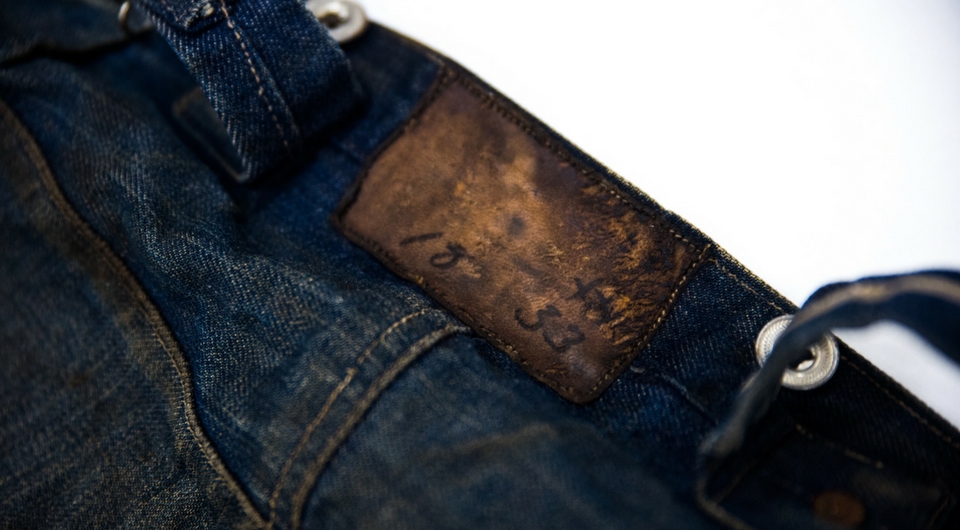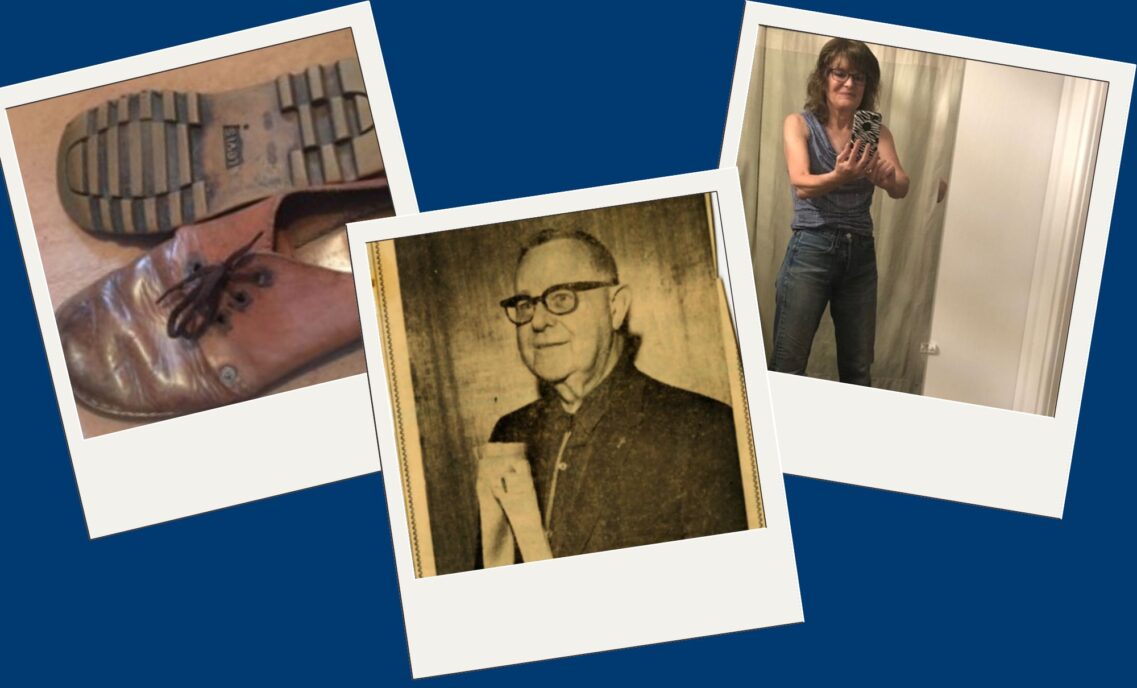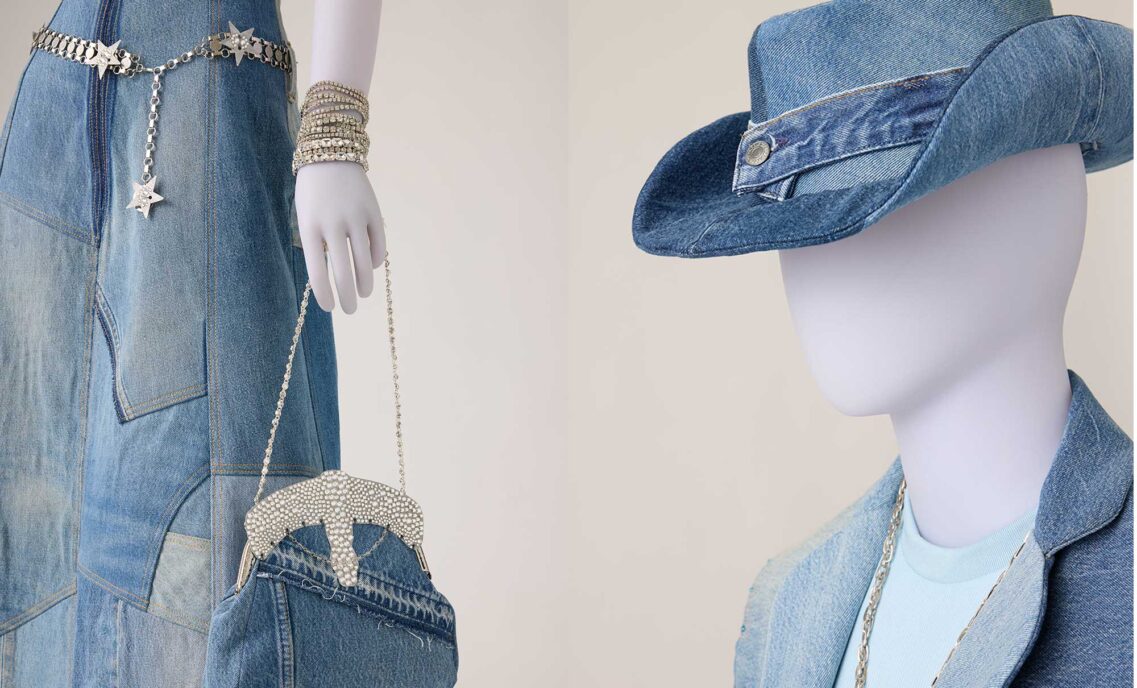Last year we introduced an amazing acquisition, the New Nevada – one of the oldest pairs of riveted waist overalls in the world. The jeans are in near-perfect condition, save for wear marks and a few minor holes and tears—plus decades of dirt and grime. So how do you make a pair of jeans dating back to the 1800s last another century? A once-in-a-100-year cleaning.
Yes, here at Levi Strauss & Co., we are known for encouraging people not to wash their jeans to conserve water, but in this case, it comes with our conservation approach. Garments added to the LS&Co. Archives are cleaned, wrapped in plain muslin cloth, stored in acid-free tissue and boxes and kept at a constant temperature. This extends the life of the garment without further washings since garments in the Archives are handled on clean surfaces with gloves.
While the New Nevada jeans were sewn in San Francisco at LS&Co.’s factory, the denim fabric came from the East Coast. They were made from nine-ounce denim purchased from the Amoskeag Mill in Manchester, New Hampshire. Because the pants were made before synthetic indigo came into use, the denim was dyed with vegetable (plant) indigo, making the cast and hue unique.
With proper preservation at the top of the list for the jean washing, other factors included revealing the original blue indigo color, hidden under layers of grime, and protecting other garments in the Archives. The New Nevada had a distinct petroleum smell that was starting to permeate other pieces in the fireproof safe where the jeans were stored.
The washing would also allow us to draw out more information about the person or people who wore the pants. This is possible when cleaning dislodges debris—bits of century-old evidence—and uncovers distinctive marks and wear patterns hidden under the grime.
Wash, rinse, repeat.
The New Nevada cleaning began at the start of our workday when Conservator Stacia Fink filled a long narrow tub with water. She dunked the pants, covering them with water and left them to soak for 30 minutes before emptying the dirty water. We repeated the process 10 times throughout the day, occasionally gently wiping the jeans with cotton balls and a paint brush.
We hit the jackpot rinsing out the front pockets when debris came loose. A piece of twine, a small button, red thread and several grain-sized wool nubs—the possible remains of a shirt or a bandana—all floated up in the water. Even more were dozens of tiny brown pulpy organic bits, probably tobacco. We collected water and debris samples for later analysis.
Post wash results.
Once the pants were washed, a beautiful deep blue color became visible—especially on the backside, along the seams, folds and between the soiled areas. The petroleum smell disappeared during the wash and the shiny top layer of grime that covered the jeans dissolved.
A few stubborn stains remain on the jeans after the wash, especially on the right front side of the leg. One theory? The stains could be from a right-handed worker who regularly wiped oily grime onto his pants. This would explain why the stains are concentrated on a single front side of the leg. An unusual x-shaped marking on the back left leg also became visible after cleaning. A random finger wiping or something else?
While it’s impossible to know conclusively about the origins of the New Nevada, half the fun is in speculating its backstory, which is why I prefer vintage jeans that are well-worn and dirty over unworn and clean. The pants, like a good mystery, reveal details in a story through a unique personal record formed during a lifetime of wear.
ABOUT THE AUTHOR
 Tracey Panek is the Historian for Levi Strauss & Co. where she manages the day-to-day workings of the Levi Strauss & Co. Archives as a key corporate asset, answering historical questions, assisting designers, brand managers, executives and other employees whose work requires historical materials in the Archives.
Tracey Panek is the Historian for Levi Strauss & Co. where she manages the day-to-day workings of the Levi Strauss & Co. Archives as a key corporate asset, answering historical questions, assisting designers, brand managers, executives and other employees whose work requires historical materials in the Archives.
Like this story?
Sign up for the Unzipped newsletter to get the best of the Unzipped blog — company news and views, employee profiles, innovation and sustainability stories, behind-the-scenes and Archives highlights — sent straight to your inbox weekly. Also, be sure to follow @TraceyPanek on Twitter for exclusive vintage photos, historical tidbits and more!

It’s a Wash: Unveiling A Century’s Worth of History
December 8, 2016






